Reindeer hairs
 Pam Hamer – A holiday investigation
Pam Hamer – A holiday investigation
It was a walking holiday, no time for collecting as stopping the group needed the agreement of our armed guard! He was keeping us safe from the polar bears in Spitzbergen.
But in a hollow on the tundra I noticed what looked like a group of white fibres/hairs. I put some onto a piece of tape to preserve them then carried on our walk.
Where could the fibres/hairs have come from?
This was the most likely – a Svalbard reindeer. There were quite a lot on the tundra though they did not let us get close. The Svalbard reindeer is slightly different from those in Norway – they have shorter legs.
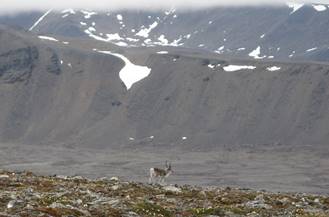 Svalbard reindeer
Svalbard reindeer
So what did the fibre/hairs I collected look like?
When I got home I looked at the fibres with my stereomicroscope. They were thick and apparently hollow. The surface is textured and at one end there is a taper.
 Reindeer hair, maximum diameter approximately 0.35 mm
Reindeer hair, maximum diameter approximately 0.35 mm
They look more like hairs than fibres so I mounted one of the hairs, which were quite crumpled and damaged, in a temporary mountant for transmitted light microscopy.
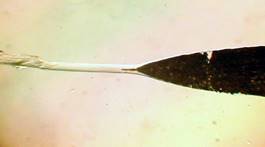 Reindeer hair: the end of the hair is a distinctive shape.
Reindeer hair: the end of the hair is a distinctive shape.
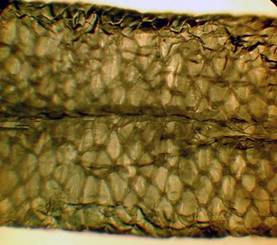 Reindeer hair: texture in the bulk of the hair can be seen at higher magnification
Reindeer hair: texture in the bulk of the hair can be seen at higher magnification
A useful reference is ‘M. C. Cooke – One Thousand Objects for the Microscope’ but there are more modern descriptions of hairs of animals at Microscopy of Hair Part II: A Practical Guide and Manual for Animal Hairs.
I checked the sections on deer. These did show similar features and the forensic article emphasised the shape of the end of the hair which apparently characterises the hair from deer.
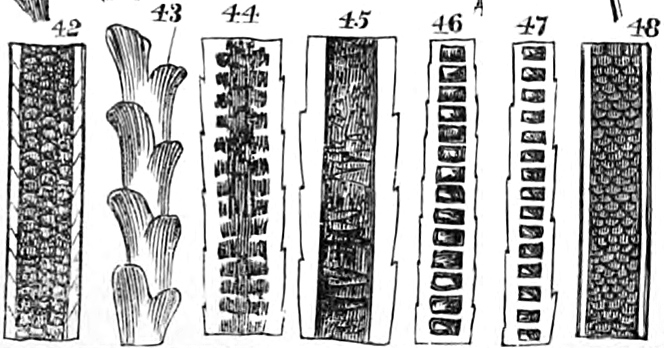 From the M. C. Cooke book – 591 is a fallow-deer hair, illustrated opposite p. 124 on Plate VII fig. 48
From the M. C. Cooke book – 591 is a fallow-deer hair, illustrated opposite p. 124 on Plate VII fig. 48
So disappointingly my first hunch was right – the hair came from a deer and not from a polar bear.
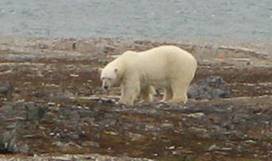 Polar bear
Polar bear

